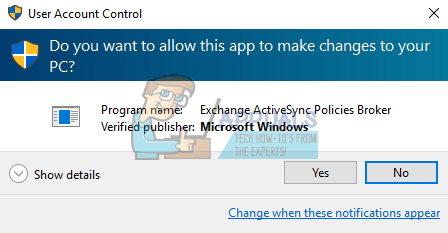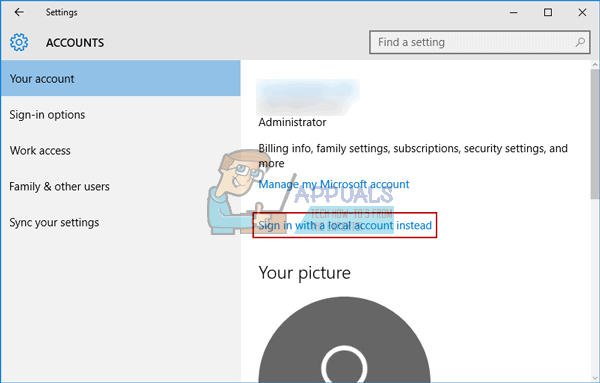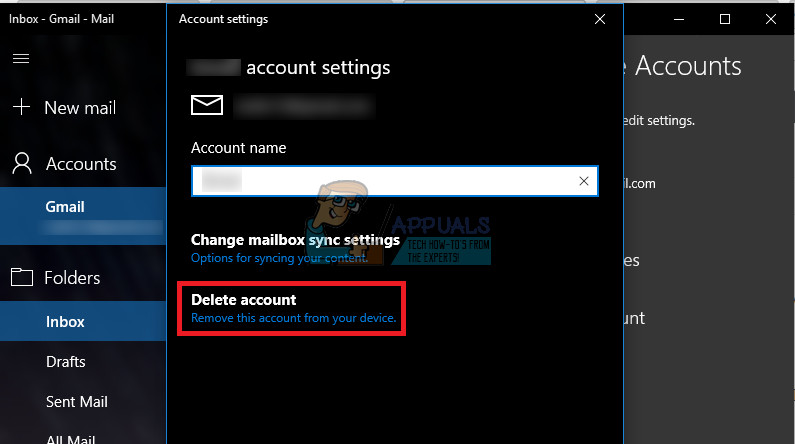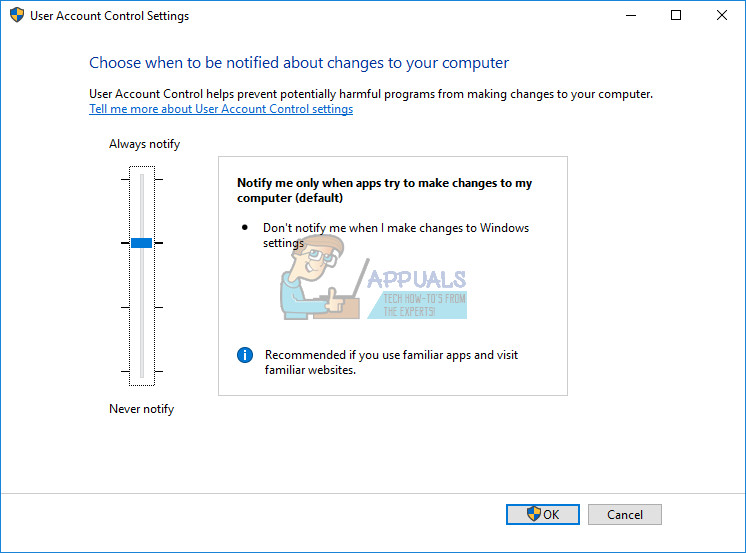Fix: Disable ‘exchange activesync policies broker’ Dialog on Windows
Using Windows without having annoying messages and errors popping up every once in a while sounds like a dream come true. However, it appears that this dream is still quite unreachable, even with an amazing version of Windows OS such as Windows 10. The reason why Windows is so popular on the market today is because it promised its users great modification option and it’s compatible with almost every app on the market.
However, users began switching to Mac OS X because it’s quite easy to understand and use and it offers a swift experience with an almost error-free performance. Let’s find out how to fix this annoying problem!
How to Disable “Exchange Active Sync Policies Broker” User Account Control Pop-Up
This particular issue usually starts to appear right after a Cumulative Update and it has been bugging users for a long time now. This particular issue doesn’t arrive alone and it usually brings a couple of extra issues on the table which can sometimes be quite difficult to fix.

This problem consists of User Account Control (UAC) asking “Do you want to allow this app to make changes to your PC?” and referring to Exchange Active Sync Policies Broker as the app in questions. Let’s find out just how to fix this problem easily!
Solution 1: Switch to Your Local Account Rather Than a Microsoft Account
Using a local account might fix the issue for you and these UAC prompts are going to be handled automatically by UAC. However, you might have been using your Microsoft account with a purpose and you wish to continue using it normally. If you switch to your local account, you can still use the Microsoft account for apps that require it.
- Navigate to the search bar in the Start menu and type in the following and click on the first result.
“Change your account picture or profile settings”
- The Settings app should open in the Accounts section.
- Under the Your account submenu, click on Sign in with a local account instead. If you are already using a local account, a different option would appear, saying “Sign in with a Microsoft account instead”.
- In order to change your account to a local account, you will need to reenter the current password for your Microsoft account.
- After you type in the correct password, you will need to setup your local account by typing in your user name, password, and password hint.
- At the last screen, click on Sign out and finish.

Solution 2: Switching to Outlook
This is a second workaround you can try in order to get rid of this annoying UAC pop-up message. Since this particular issue is tied with your Exchange account in the Mail app, removing it from the App and switching to Outlook or a third party Mail manager.
- Open the Mail app by searching for it in the search bar in Start menu.
- At the left section of the Mail windows, check the bottom for a gear icon which will open Settings at the right pane.
- Click on the first option, named Manage Accounts
- Click on your Exchange account in order to manage its settings.
- When its window opens, click on the Delete account option in order to remove this account from the Mail app.
- Click on the Save button and restart your computer.
- Check to see if the UAC message still appears on your computer.
- If it doesn’t, feel free to switch to outlook at your default mail manager.

Solution 3: Switching UAC’s Security Level Lower
Handling the Exchange Active Sync Policies Broker is usually allowed by UAC and that is why you get prompted about it as soon as you update your computer. It seems like each new Cumulative Update resets your UAC settings to the highest level of security and that is why you are unable to get rid of the error message.
- Open Control Panel by searching for it in the Start menu.
- Switch the View by option in Control Panel to Small Icons and locate the User Accounts option.
- Open it and click on “Change User Account Control Settings”.
- You will notice that there are several different options you can choose on the slider. If your slider is set at the top level, you will definitely receive more of these pop-up messages than usual.
- Try decreasing this value by one if it’s at the top slider and check to see if it helped.
- We recommend you don’t turn it off completely because it won’t notify you when apps try to make changes to your computer and when you make changes to Windows settings.

Solution 4: A Registry Tweak
If your User Account Control security level was not set to the maximum, you might be able to fix this via a simple registry fix which will enable us to elevate the Exchange ActiveSync Policies Broker into the UAC’s COM auto-approval list, meaning it won’t require you to click yes every time it wants to make changes to your computer.
- Open Registry Editor by searching for “regedit” or by typing “regedit” in the Run dialog box which can be opened by using the Ctrl + R key combination.
- Check to see if there is a REG_DWORD Registry entry called {C39FF590-56A6-4253-B66B-4119656D91B4} with the data of 1 in the following location:
HKEY_LOCAL_MACHINE\SOFTWARE\Microsoft\Windows NT\CurrentVersion\UAC\COMAutoApprovalList
- If it doesn’t exist, make sure you create it in the location above by right-clicking on the COMAutoApprovalList folder, selecting New >> DWORD (32-bit) Value.
- Name it {C39FF590-56A6-4253-B66B-4119656D91B4} and set its value to 1.
- After we have made sure to include Exchange Active Sync Policies Broker in the list, let’s check to see if the tool is elevated. Make sure the following key exists:
HKEY_LOCAL_MACHINE\SOFTWARE\Classes\CLSID\{C39FF590-56A6-4253-B66B-4119656D91B4}\Elevation
- If it doesn’t create it by right-clicking on the {C39FF590-56A6-4253-B66B-4119656D91B4} key and selecting New >> Key. Name it Elevation.
- In the Elevation key, make sure there is a DWORD called Enabled and make sure its value is set to 1.
- The problem should be solved now, as soon as you restart your computer.
- If this particular issue still continues to appear, navigate back to Registry Editor and delete the following key if it exists in that location:
HKEY_CURRENT_USER\SOFTWARE\Classes\CLSID\{C39FF590-56A6-4253-B66B-4119656D91B4}